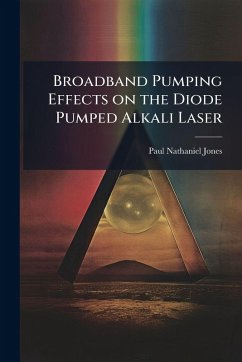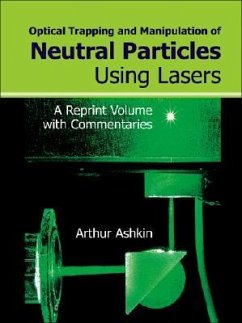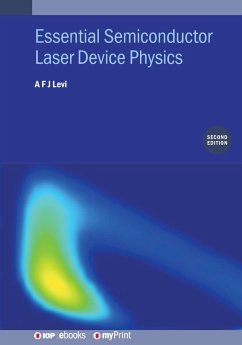
Measuring Dispersion in Laser Cavity Mirrors Using White-Light Interferometry
Versandkostenfrei!
Versandfertig in über 4 Wochen
15,99 €
inkl. MwSt.
Weitere Ausgaben:

PAYBACK Punkte
8 °P sammeln!
Terahertz radiation is an emerging field that has far reaching applications. There is a need for portable and affordable terahertz sources that may be used for detection of structural weaknesses in aerospace composites. One possibility for terahertz generation is a femtosecond Cr: LiSAF laser. However, controlling intracavity dispersion is necessary in order to get the ultrashort pulses needed to generate terahertz radiation. This research measures dispersion of the chirped femtosecond intracavity mirrors by employing white-light interferometry and explains the theory behind the curve-fitting ...
Terahertz radiation is an emerging field that has far reaching applications. There is a need for portable and affordable terahertz sources that may be used for detection of structural weaknesses in aerospace composites. One possibility for terahertz generation is a femtosecond Cr: LiSAF laser. However, controlling intracavity dispersion is necessary in order to get the ultrashort pulses needed to generate terahertz radiation. This research measures dispersion of the chirped femtosecond intracavity mirrors by employing white-light interferometry and explains the theory behind the curve-fitting process used to calculate dispersion. To compensate for the narrow reflectivity band of the mirrors, a CaF2 (calcium fluoride) window was used to increase the number of spectral fringes in the interferogram. This work has been selected by scholars as being culturally important, and is part of the knowledge base of civilization as we know it. This work was reproduced from the original artifact, and remains as true to the original work as possible. Therefore, you will see the original copyright references, library stamps (as most of these works have been housed in our most important libraries around the world), and other notations in the work. This work is in the public domain in the United States of America, and possibly other nations. Within the United States, you may freely copy and distribute this work, as no entity (individual or corporate) has a copyright on the body of the work. As a reproduction of a historical artifact, this work may contain missing or blurred pages, poor pictures, errant marks, etc. Scholars believe, and we concur, that this work is important enough to be preserved, reproduced, and made generally available to the public. We appreciate your support of the preservation process, and thank you for being an important part of keeping this knowledge alive and relevant.








![Displacement Interferometry by the Aid of the Achromatic Fringes, Pt. [I]-Iv, Issue 249, volumes 3-4 Cover Displacement Interferometry by the Aid of the Achromatic Fringes, Pt. [I]-Iv, Issue 249, volumes 3-4](https://bilder.buecher.de/produkte/71/71607/71607349n.jpg)



